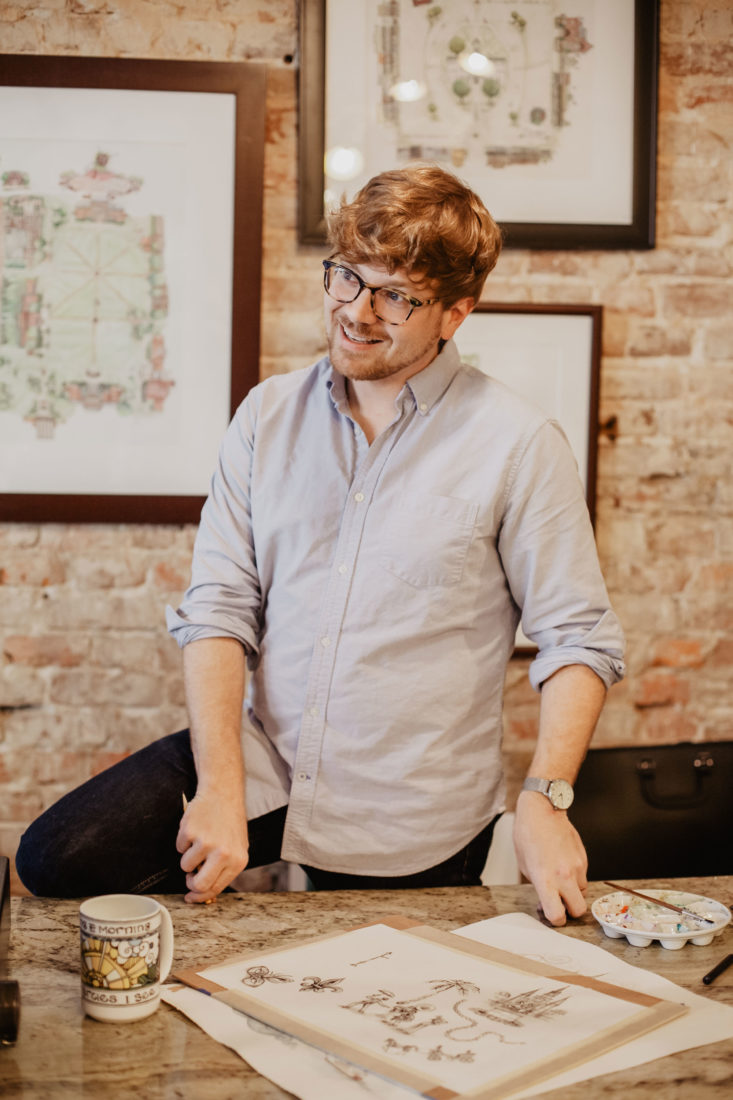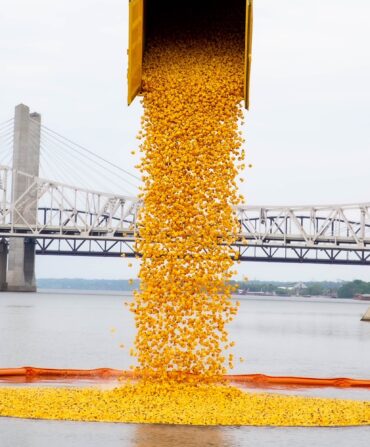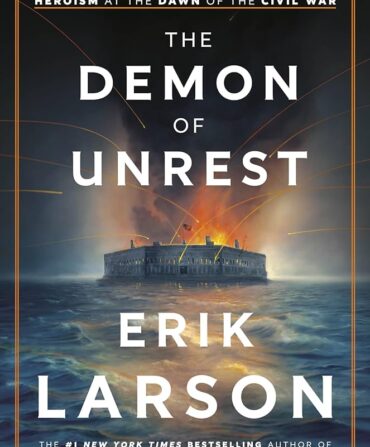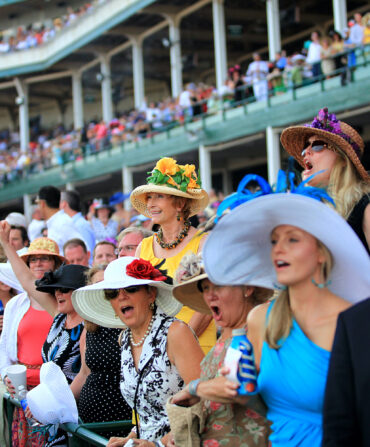A strong sense of place is a feeling that unites all Southerners. For the artist Adam Trest, it’s also his life’s work. Inspired by his hometown of Laurel, Mississippi, and the charms of the region’s great cities, Trest is launching a new series of watercolor maps of what he deems some of the most essential Southern places.
He comes by his love for cartography naturally. After three and a half years at Mississippi State, Trest changed his major from architecture to art in order to follow the footsteps of Walter Anderson and the other great Mississippi artists who inspired him as a child. Around the same time, he took his niece to Disney World, where he happened upon an early concept map of Fantasyland, one of the Disney theme parks. “I loved it and couldn’t get it out of my mind,” Trest says. After years of painting watercolor portraits and teaching art to local schoolchildren, a friend asked him to illustrate a children’s book about the history of Laurel. “I wanted the cover pages to be a map of Laurel,” he says. “This was my chance.”
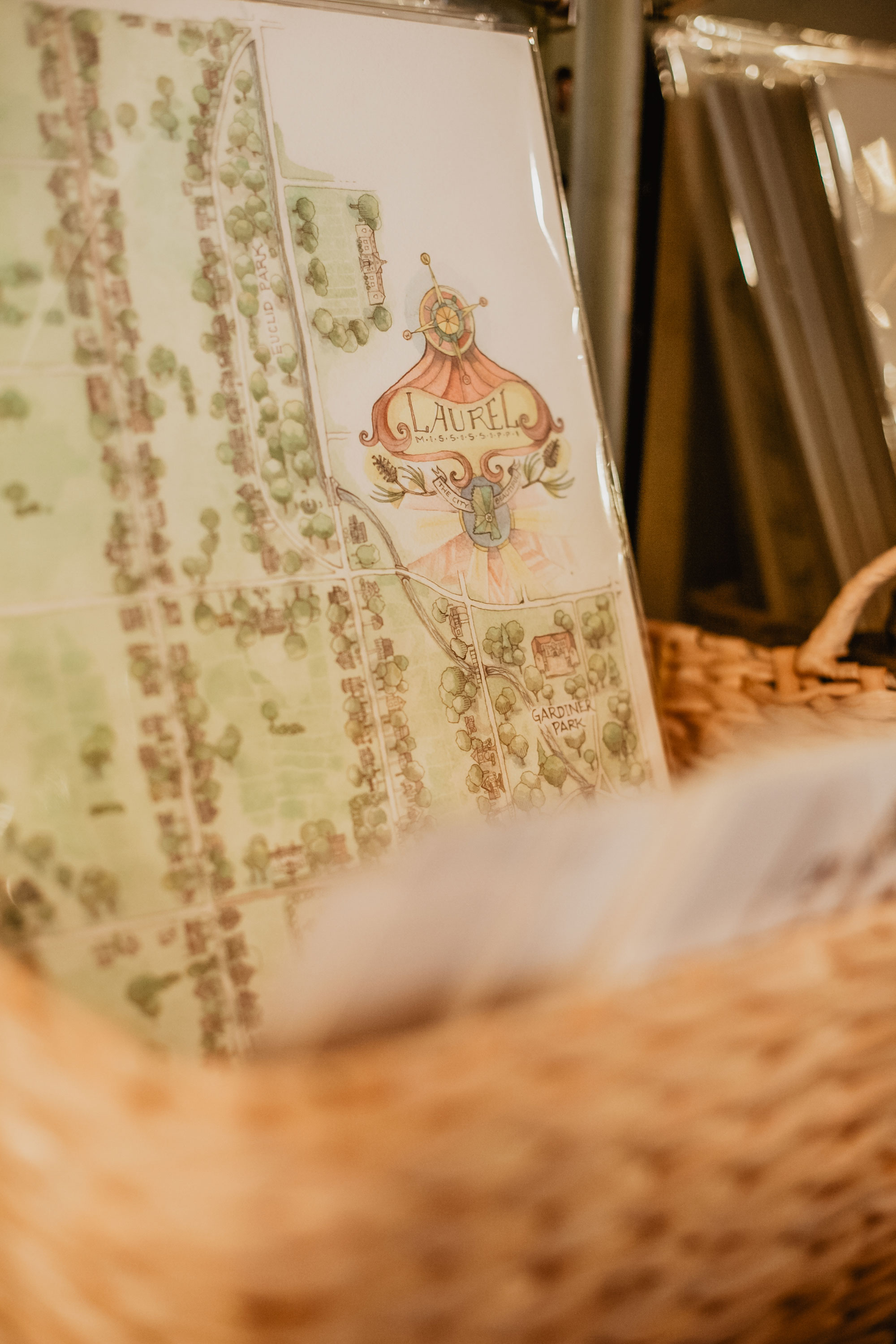
Brooke Davis
Encouraged by his first map, he then painted the Square in downtown Oxford, Mississippi. “But the Mississippi State people got upset I was painting the enemy,” he laughs. “So I did the Drill Field in Starkville, and then the entrance to the Lucas Administration Building at USM for good measure.” Having tackled three of Mississippi’s public universities, Trest realized he might be onto something.
Once he began printing his maps on pillows backed with coordinating patterns, the projects drew even more attention, leading him to open a home goods store in downtown Laurel in 2015. Although filled with many other collections, including children’s lines, bedding, and bags with his prints on them, the maps have remained one of his favorite ventures. This month, Trest launched his new Southern Cities Collection, opening the door for many more maps to come.

Brooke Davis
“I’m trying to paint the quintessential Southern towns,” Trest says. “I want people to say, ‘That’s where I got married’ or ‘That’s where I’ve gone on vacation since I was four.’” He began his new collection with New Orleans, a city he and his family have visited regularly since he was a child. “I needed an opportunity to do Jackson Square—the cathedral is like a castle and I could just see those carriages lined up in my mind,” Trest says.
To create a map, Trest visits the area and takes as many pictures as possible. “But of course, I inevitably miss something,” he says. “So, I use Google maps to fill in the gaps and double check myself.” After drafting each map out in pencil and then erasing it so the lines are barely visible, Trest paints layers of watercolor, adding definition with a pen or pencil. This technique allows room for his creativity to emerge. What may be a couple of ink lines on a more realistic map become flourishes of character on one of Trest’s pieces. His small towns have flagpoles and basketball goals, for example, and a larger-than-life sailboat sits anchored in the harbor of Bay St. Louis, Mississippi. “I want the feel of the place to come out,” he says.
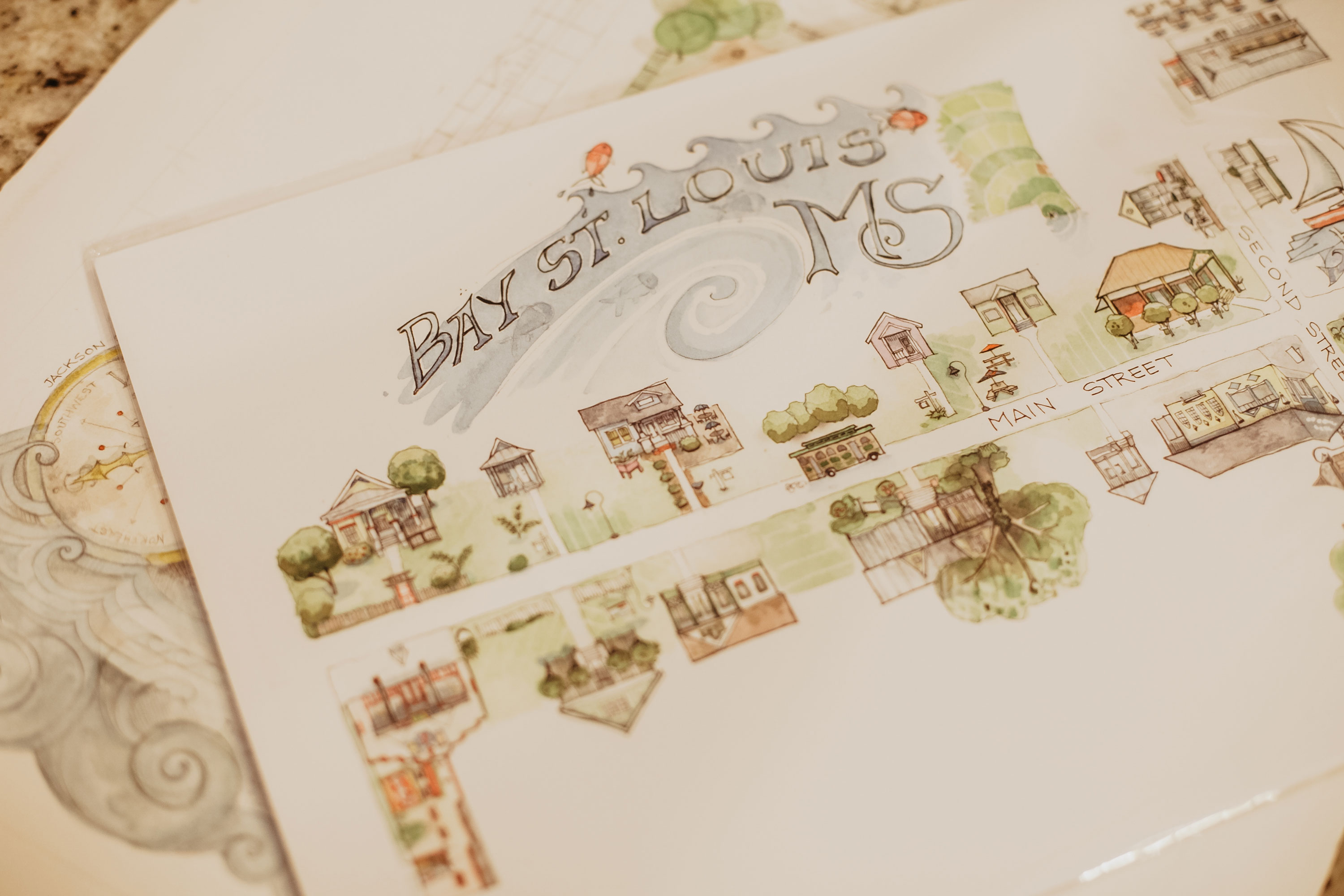
Brooke Davis
Next up: Fairhope, Alabama, where Trest lived for a year after college on a bright red 1973 Pearson ten meter. In the next six months, he plans to paint Seaside, Florida, and then Athens, Georgia, or Auburn, Alabama, depending on where inspiration strikes. The to-do list keeps growing with destinations like Chapel Hill, Savannah, Charleston, and Mount Vernon only a few of the places Trest hopes to paint in the near future. “The goal is that when people see these, they won’t think of me as the artist,” he says. “The maps will begin to tell your story about that place. It’ll provide a vessel for your memories.”


